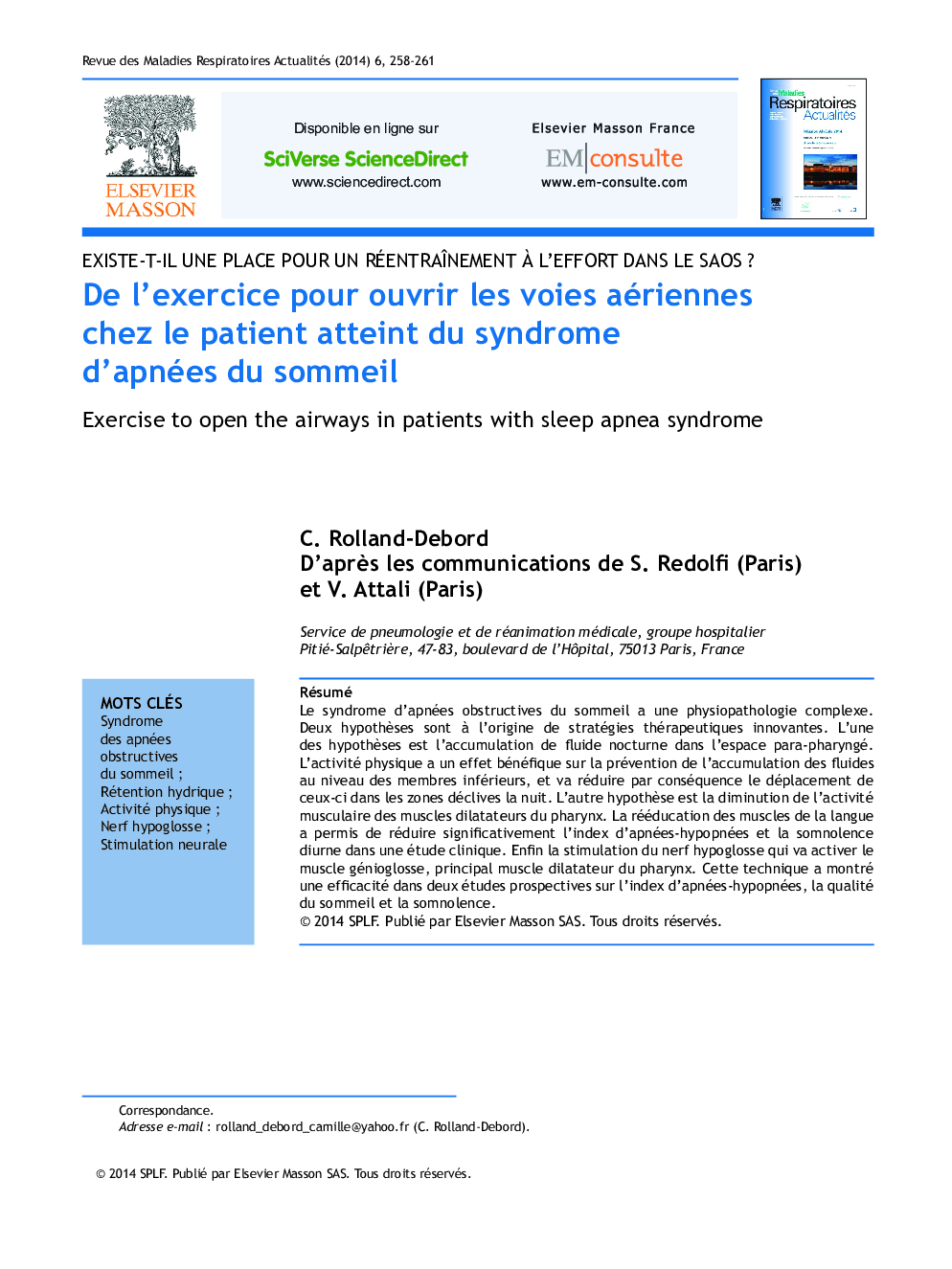| Article ID | Journal | Published Year | Pages | File Type |
|---|---|---|---|---|
| 4215625 | Revue des Maladies Respiratoires Actualités | 2014 | 4 Pages |
Abstract
The mechanisms involved in the physiopathology of sleep apnea asyndrome are complex. Two distinct hypothesis have been involved in recent treatment strategies. The first hypothesis is about the overnight retention of fluid in the para-pharyngeal area. Physical activity has a positive preventive benefit upon fluid retention in the lower legs and may reduce the nocturnal displacement of these fluids in the rostral area. The second physiopathological hypothesis is the activity decrement of laryngeal dilator muscles. Lingual muscle rehabilitation has been followed by a significant reduction of apnea-hypopnea index (AHI) and nocturnal sleepiness in a clinical study. Finally, the hypoglossal nerve stimulation is aimed to activate the main pharyngeal muscle dilator. In two prospective trials, this technique has shown benefits on AHI, quality of sleep and sleepiness.
Keywords
Related Topics
Health Sciences
Medicine and Dentistry
Pulmonary and Respiratory Medicine
Authors
C. Rolland-Debord,
